Cured in Place Pipe
Cured-in-place pipe (CIPP) lining is a non-disruptive, trenchless method; i.e. no excavation, of pipe repair. It involves the insertion of a resin impregnated jointless and seamless lining tube either by means of water or steam. It is then cured to form a tight fit against the existing sewer; moulding to the host pipe.
Beside, restoring the structural integrity of the pipe, the seamless pipe prevents infiltration and exfiltration. The problem of root intrusion via joints that have weakened over time is eliminated. Last but not least, the flow capacity is enhanced because the CIPP pipe is much smoother than old clay and concrete pipe.
By and large, the technology may be used for gravity and pressured pipes; diameter ranging from 100mm to 1800mm. The thickness of the felt and formulas of resin may be customised in accordance to meet the pressure, corrosive, chemical resistance and abrasive needs of specific applications.
The Process
- Liner Impregnation
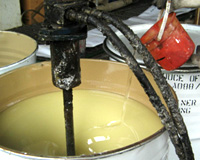
-
- The resin is mixed mechanically with the required catalyze/hardener. Upon mixing, the resin will be pump to the lining as shown below.
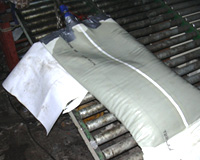
-
- The lining tube is made of polyester felt with an outer coating of polyurethane. The tube is impregnated thoroughly with a liquid resin chosen to suit the working environment of the pipe.
- Once Impregnated with resin the lining is installed using the inversion method as described following?
- Liner Installation
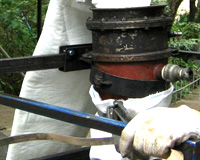
-
- The end of the lining is turned inside out for a predetermined length and clamped to an inversion ring over the installation manhole. Compressed air is then introduced into the turned back section creating a pressure which causes the lining to continue turning inside out along the defective pipe.
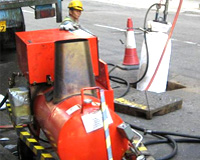
-
- The constant addition of compressed air maintains the pressure which keep the lining inverting and ensures it is held firmly against the host pipe.
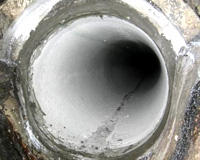
-
- When the installation is complete, steam will be introduced into the lining to gradually raise its temperature to achieve a controlled cure of the resin.
- Once the cure is completed the ends of the newly formed pipe are cut and trimmed.
- Advantages
-
- Environmental friendly as no digging is required
- Reduce inconvenience to publics
- Minimal disruption to neighbouring infrastructure
- Forms a structural and durable new pipe within the old pipe
- Bridges and seals gaps, holes and cracks
- Resistant to corrosion and chemical attack
- Substantial cost saving over conventional reconstruction methods
- Improves flow characteristics
- Suitable for both gravity and pressure pipes.


